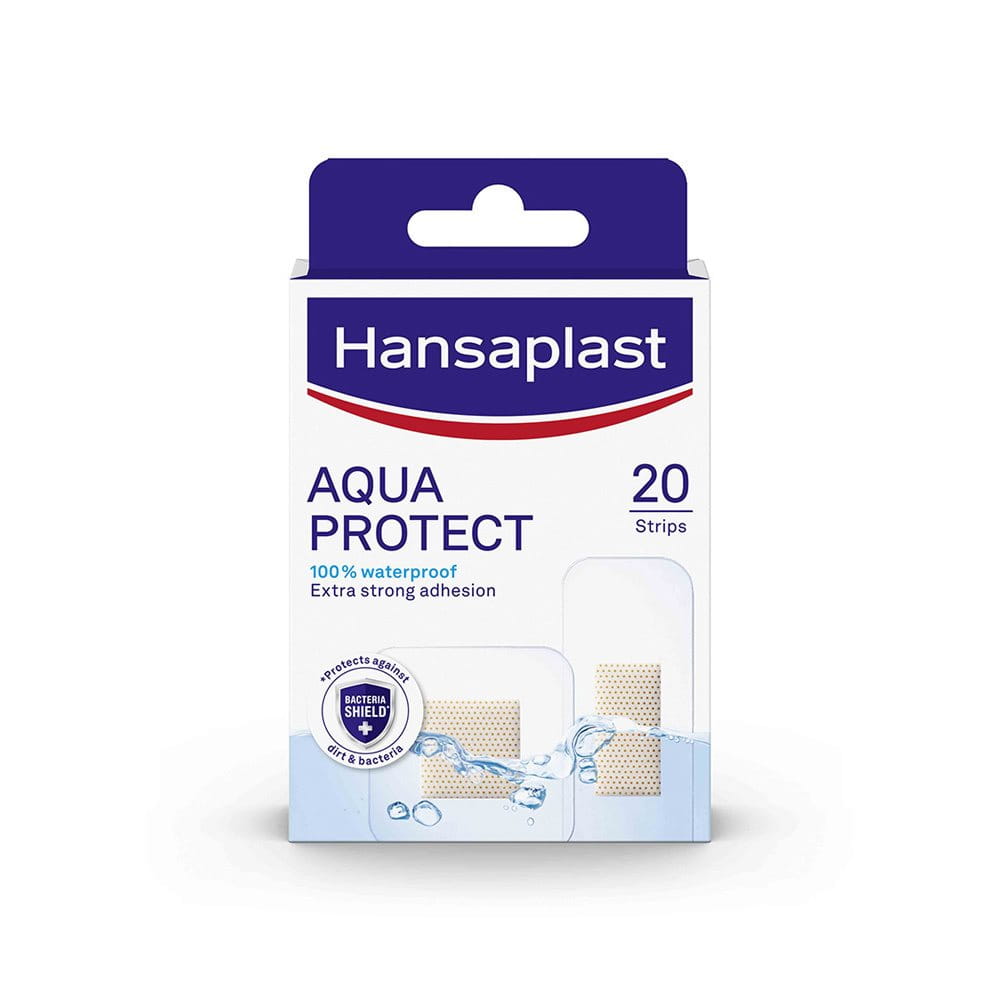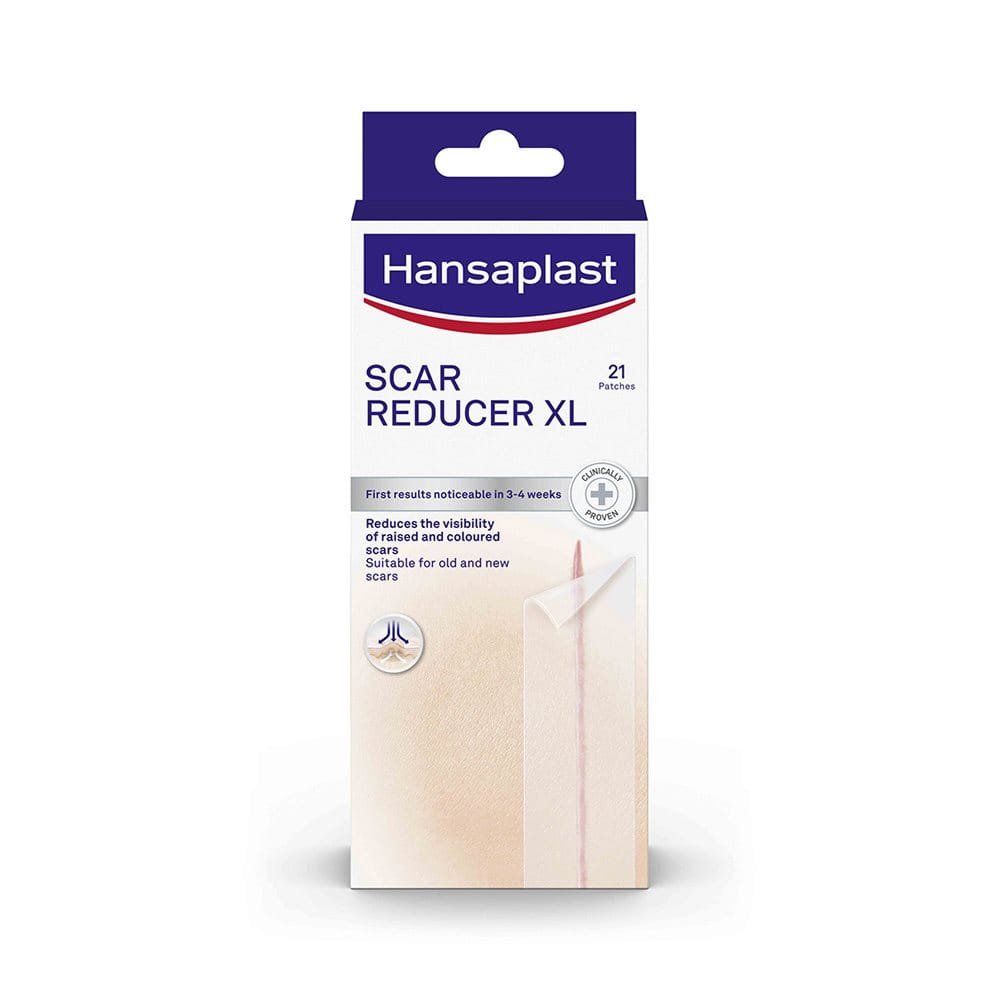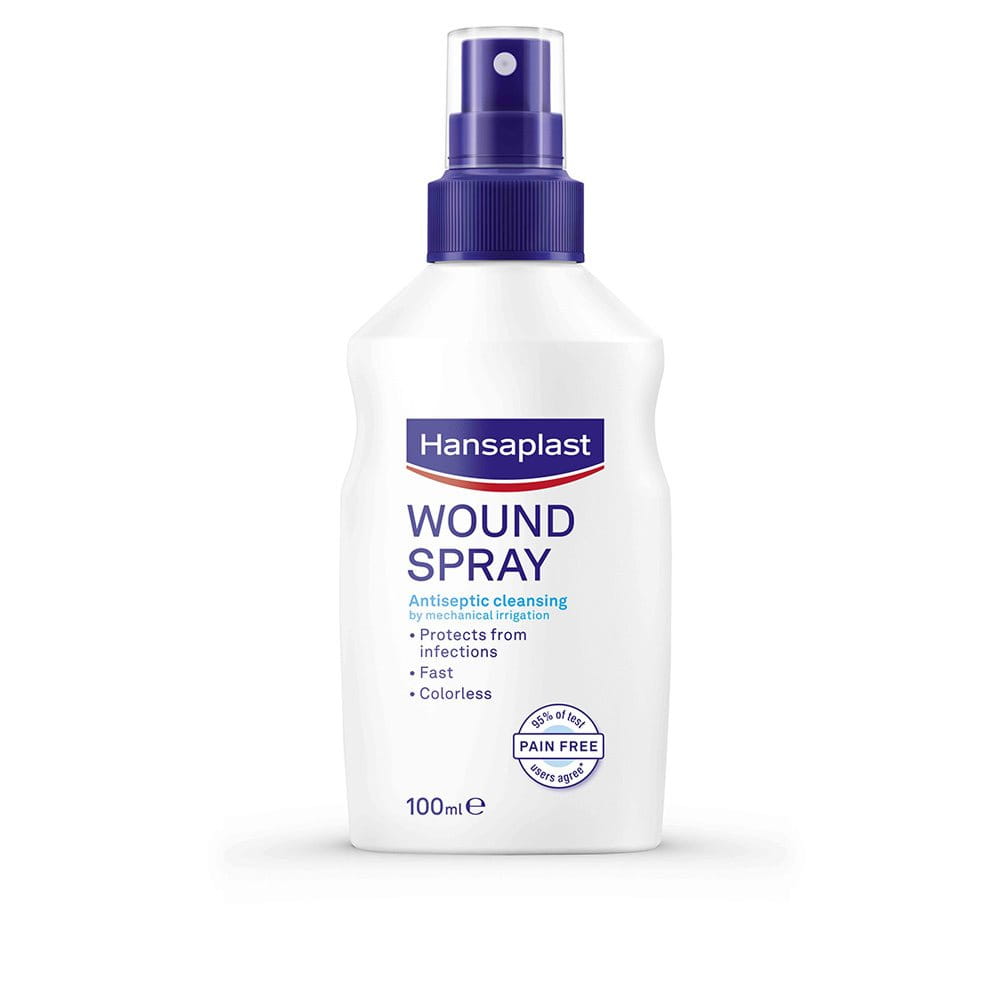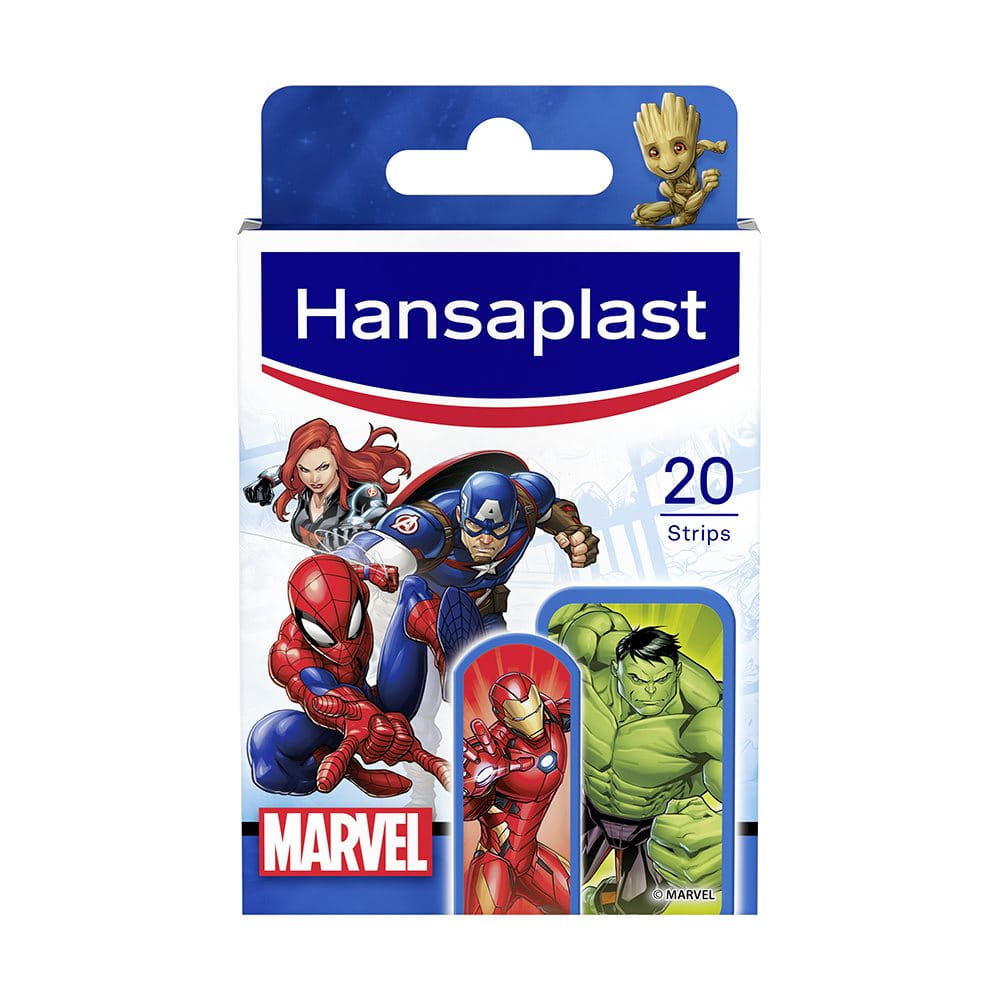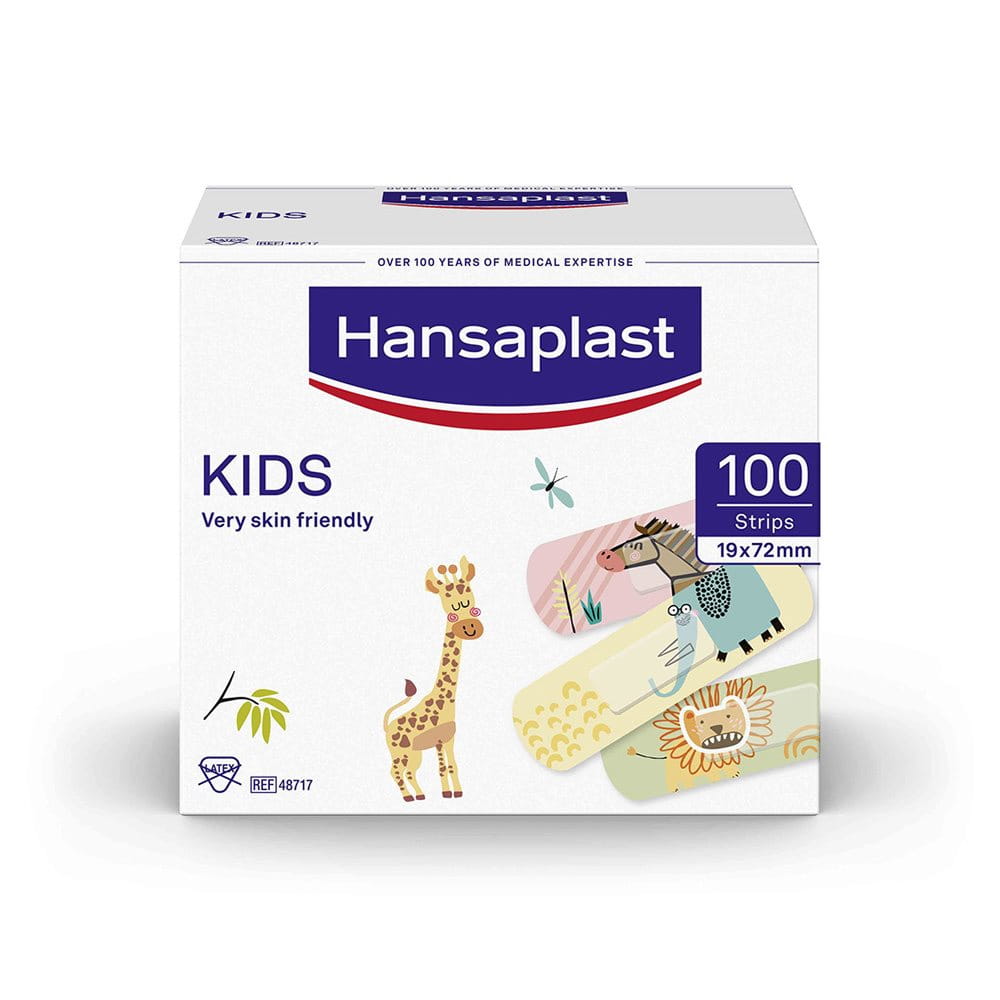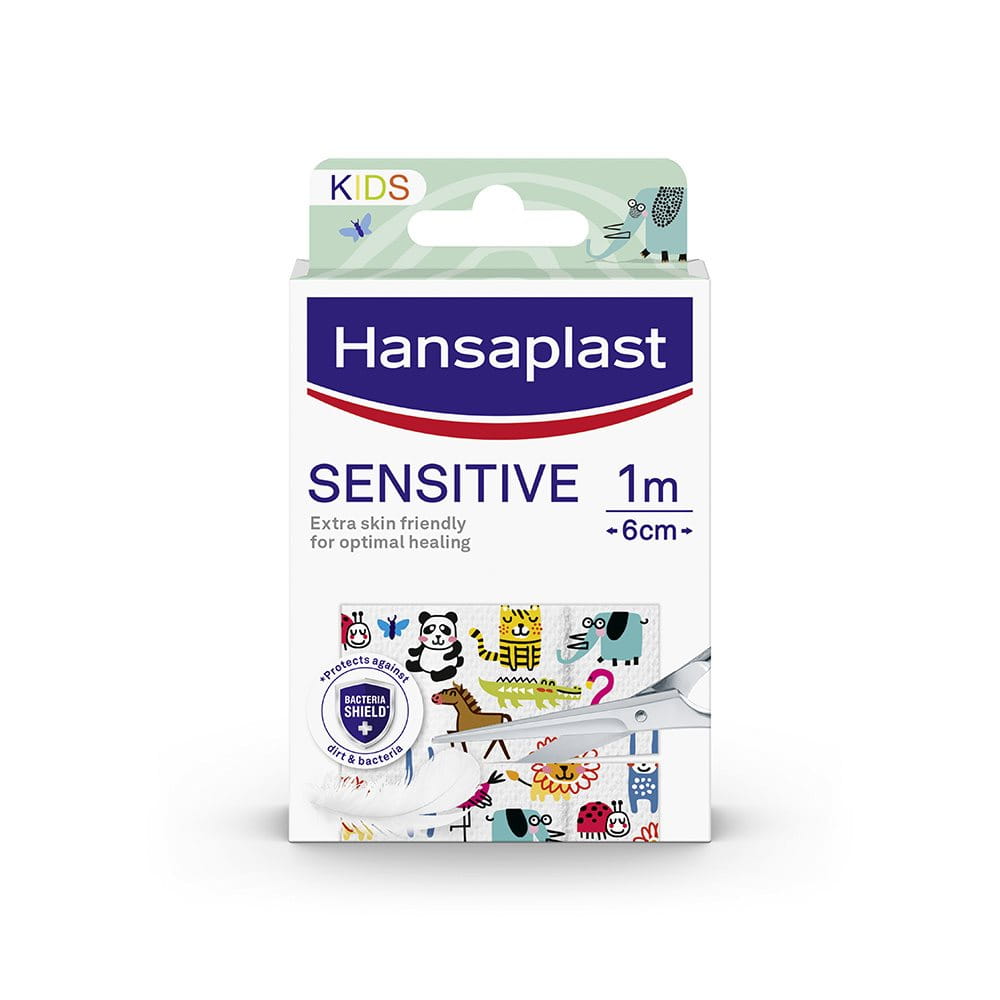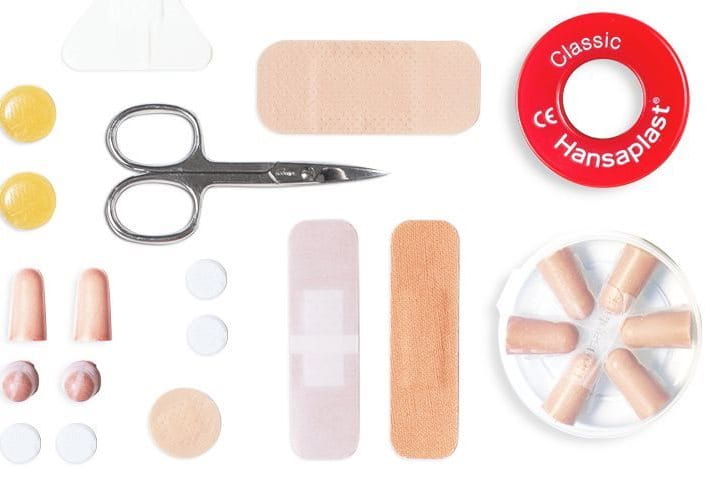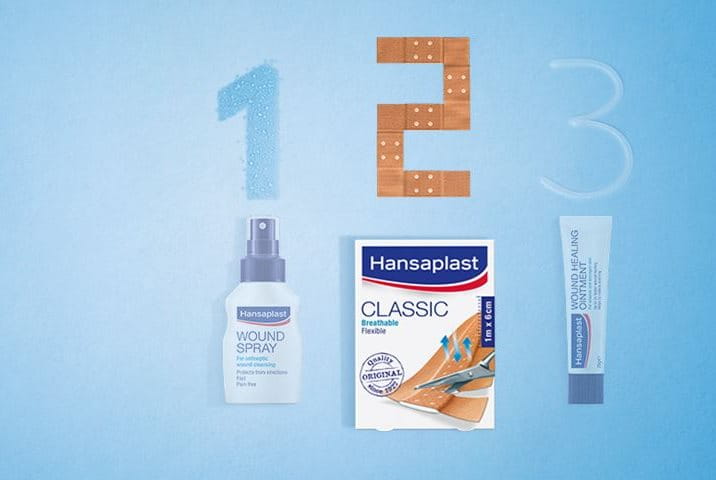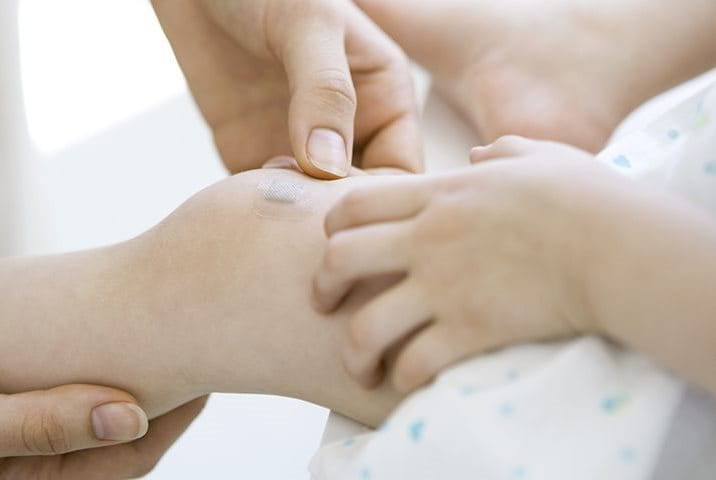Children are moving around and playing all day - so minor injuries are inevitable. Here you can find out all about safe and quick wound care for kids and which injuries and warning signs you should consult a doctor about.
How to treat your child's wound
Small wounds like scrapes (abration), cuts (laceration) and grazes – these injuries are particularly common in children. Suitable products and a good wound care procedure are necessary to treat them properly and protect children's sensitive skin. You should also always have a first aid kit for children with you when you are on the go. This will prevent complications and allow the injured skin to heal quickly.
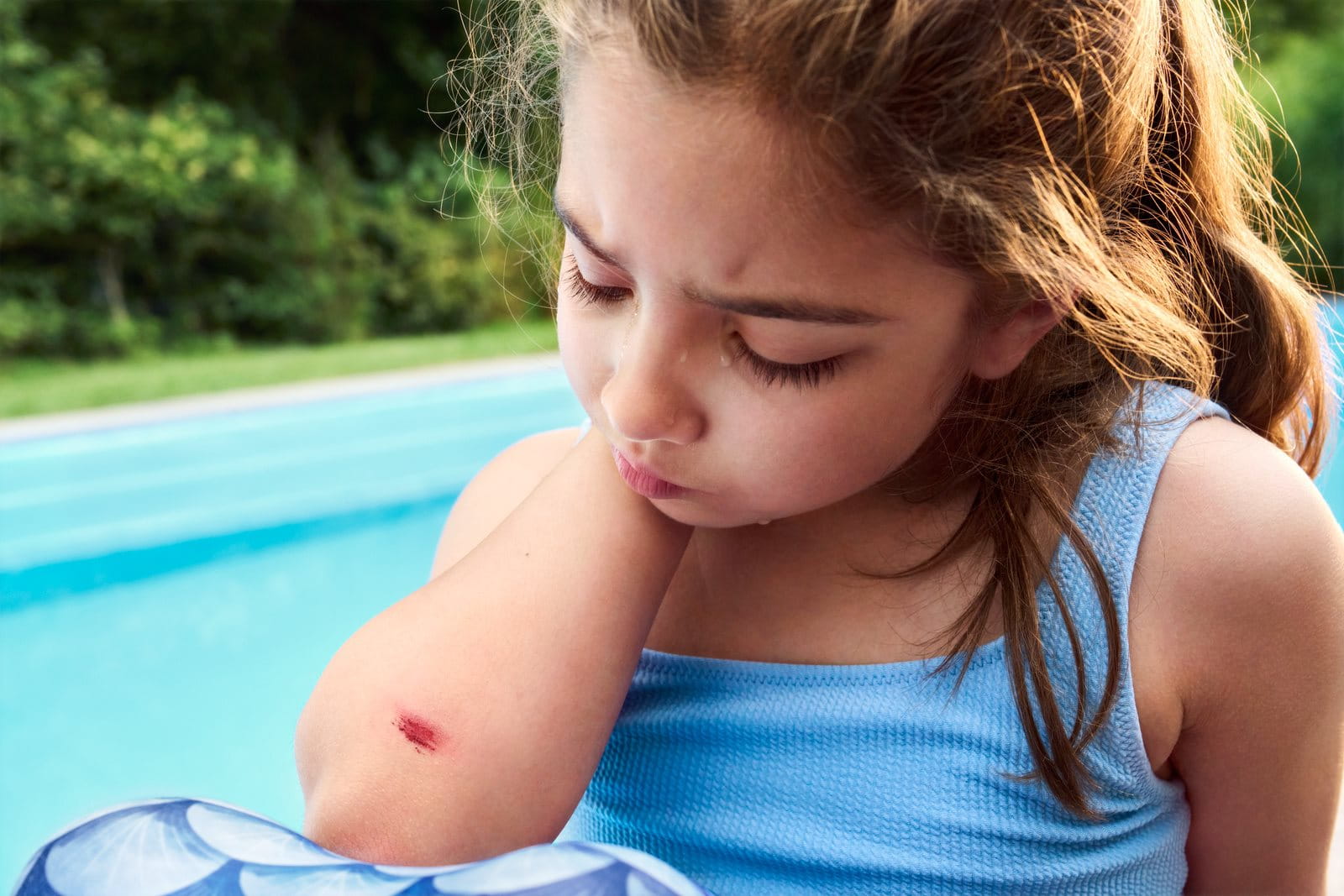
Three steps for pediatric wound care
The most important thing is to comfort and calm the child. Injured children are often in shock as a result of the accident, are scared and want to be consoled. You should also ask which parts of the body are hurting. This will tell you what invisible internal injuries the child may have, how serious they are and if your child needs to see a doctor. In the case of small abrasion and laceration wounds, follow these basic wound care steps. Explain to the child in a calm tone of voice exactly what you are doing to help ease their fear of the treatment.
Kids plasters provide protection and distract your child
Special plasters for kids are particularly suitable to treat a scraped knee, a scratch on the cheek and other common types of wounds in children. For your child to get back to their activities soon, we recommend Hansaplast Sensitive kids plasters for children's sensitive skin. These particularly skin-friendly kids plasters with hypoallergenic material offer optimum protection for minor wounds. All Hansaplast kids plasters protect your kids’ wound from dirt and bacteria thanks to the Hansaplast Bacteria Shield.

With Hansaplast water-resistant kids plasters, you can apply a waterproof wound dressing. The Aqua Protect Stripes have an underwater-themed fish motif and keep water, dirt and bacteria from getting in the wound. It protects your child when bathing or showering. The fun marine animal printing will distract your child from the pain of the wound and keep it safe at the same time. Try to keep your child from swimming with the wound though.

Kids plasters with a variety of friendly motifs like Hansaplast kids animal strips, the Disney FROZEN 2 motifs and the Marvel plaster set (based on the famous films) quickly put children's minds at ease after the initial scare.

Common injuries in children and important emergency wound care
In addition to the common minor wounds already mentioned, there are other typical injuries in children, that they can inflict on themselves in everyday life, while playing or out and about. We explain how to react in the respective situation and which emergency wound treatment you can apply yourself.
Emergency wound care at home and on the go
In emergencies, e.g. accidents with severe bleeding or a broken bone, first aid for children includes shock prevention and bridging the time until the emergency services arrive. Continue to care for, comfort and observe the child, keep them warm and cover them up until the emergency services arrive or the child can be cared for by relatives.
Larger cuts, abrasions and laceration wounds that reach very deep into the tissue and bleed very heavily should be examined by a doctor.
Immediate measures:
- Provide first aid and seek medical attention right after the initial wound treatment. If in doubt, call an emergency doctor.
- Try to stop the bleeding, for example by applying a pressure bandage to a wound on the arm or leg. Talk to the child, meet their needs and make eye contact.
Tetanus protection must be checked and refreshed if necessary, especially in the case of bite wounds, but also in the case of other contaminations.
We have summarized practical tips and advice for the care of children's skin in the event of an accident for you here. Our helpful wound care checklist for your medicine cabinet contains all the important information on first aid for children. Also included in the checklist: great coloring pages with Disney motifs to color in as a comforter at home or on the go.
Treatment of closed wounds
Closed wounds such as bruises, hematomas and contusions are often accompanied by swelling, skin discoloration and/or pain. Generally, these injuries do not require a medical assessment right away. Bruises and contusions should be treated according to the R.I.C.E. (rest, ice, compression, elevation) rule.
In the event of internal injuries, do not move the child and encourage them to keep the affected body part still and not to touch it. This will prevent dislocation of fractures and further aggravation of other injuries. Good first aid can reduce further dangers and relieve acute pain. However, it cannot replace a doctor. The more familiar you are with the risks in everyday life and the basic wound care steps, the better you will be able to help a child in an emergency.
When should I take my child to the doctor?
There are a few basic indications as to when medical help is required for wound care for kids:
- A wound is bleeding heavily.
- There are foreign objects in the wound.
- For larger, deep or heavily bleeding wounds.
- It is a bite wound.
- There is no tetanus protection or you are unsure about this.
- If your child’s wound is not healing or heals very slowly.
- If a wound has become infected.
- For wounds on the face or neck.
- For fractures or other orthopaedic injuries.
- If you are unsure what to do or what type of injury it is.
A doctor can disinfect and treat wounds in children and also prescribe medication and painkillers. It is also helpful to ask a doctor for information about other necessary measures and recommendations on what to do until the injury has fully healed.
Note: Write down important telephone numbers and information and always carry them with you in case of an emergency.
We would like to draw attention to the fact that although all the above tips and advice have been compiled with care, they are in no way a substitute for medical advice and treatment. Please always read the instructions for use and package inserts of our products carefully. Important: If you have any questions about wound treatment, please consult a healthcare professional.
The information on this website is not intended as a basis for self-diagnosis, treatment or medication. If you have or suspect a health problem, always consult a doctor and follow his or her advice independently of the information provided on this website.
For further information about Hansaplast products, please call the Hansaplast hotline on 040/4909 7570[JB1]. (Landline charges apply according to the tariff of your telephone provider)